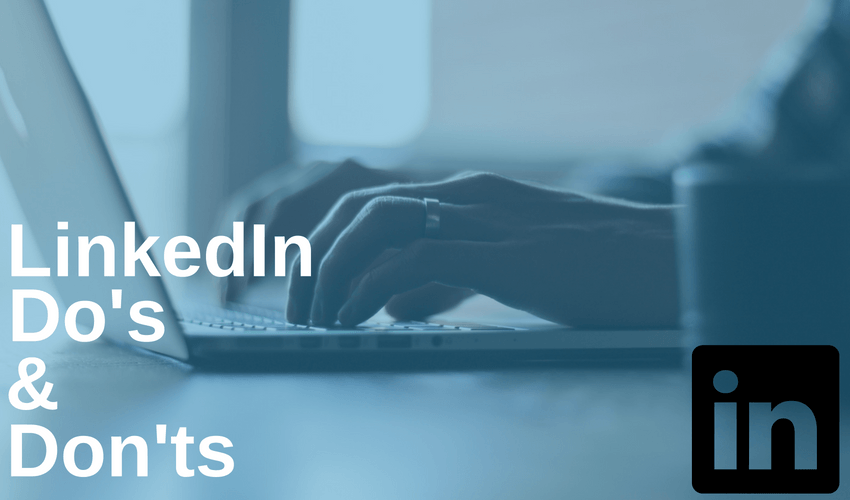LinkedIn is a service that individuals use to find jobs and also seek out employers, but did you know there are many services LinkedIn offers that you might be using wrong? By reading our LinkedIn Do’s and Don’ts, you are bound to find a few ways to improve your profile!
DO
Choose a great profile photo.
First impressions are essential. By creating a good first impression, you will establish the baseline for all thoughts and opinions a potential employer will make of you. Did you know how long it takes to make up for and eventually reverse a bad first impression? By having a clear, professional photo, your chances of making a good first impression automatically increase.
“A photo can go a long way to convey passion, energy, charisma, empathy, and other soft skills that are hard to write about.” The Muse
Keep your page up-to-date.
There are many different functions on LinkedIn that allow you to keep followers updated on your professional career. One of the most important sections to keep updated is your profile section, which is located at the top of your profile. Keeping your profile section up-to-date is important because it is the first section viewers see when they open your page and can give potential employers a quick synopsis of who you are. In this section, you can include where you currently work (with your position title), your education, and a short summary about yourself. Another vital section on your page to keep updated is your ‘experience’ section. Showcasing past jobs and responsibilities you’ve had is important as, for some readers, this section can be viewed essentially as a resume.
Take advantage of the Summary section.
The Summary section is crucial because it allows you to tell viewers about yourself in your own words. Show off your personality, touch on your professional experiences and skills, and tailor it all exactly the way you want it to be presented. According to Career Horizons, “your summary should be around 3–5 short paragraphs long, preferably with a bulleted section in the middle.” Don’t miss an opportunity to showcase your writing skills and personality for potential viewers.
Include multimedia
When given the chance to show off your expertise through work you have produced, do it! Having multimedia on your page will likely help you stand out when compared to competition. Including any multimedia work you have done on your page gives employers an accessible showcase of your skills. You can include multimedia In your ‘Summary’ and ‘Experience’ sections on your profile.
DON’T
Don’t add people you don’t know.
Although it is important to have many connections on LinkedIn, it is not professional to add people that you do not know. Did you know that if enough people deny your invitation, LinkedIn can shut down your account? White it is important to have at least 50 connections, it is essential you know who you are connecting with.
Don’t forget to add your contact information.
Although it seems like a common thing to remember, many people look over the ‘Contact Info’ portion of their LinkedIn profile without realizing it. You can find this section under your profile settings. If you do not list any contact information, it makes it difficult for a company to reach out to you.
Don’t forget to be social.
LinkedIn is meant for many things, but one of its most important functions is to be social with others—this is social media after all. Sharing recent news and staying active on LinkedIn shows others that you are comfortable on LinkedIn and know how to use it effectively. It is easy to make a profile and then leave it dormant, but it is important to use LinkedIn fully, especially when you are in job search mode.
We hope these do’s and don’ts help you to improve your presence on LinkedIn and the overall impact of your profile. Whether you are seeking employment, or simply looking to get the absolute most of social media, these best practices will get you moving in the right direction.
Do you know of any other LinkedIn practices that weren’t included here? We’d love to know them!


